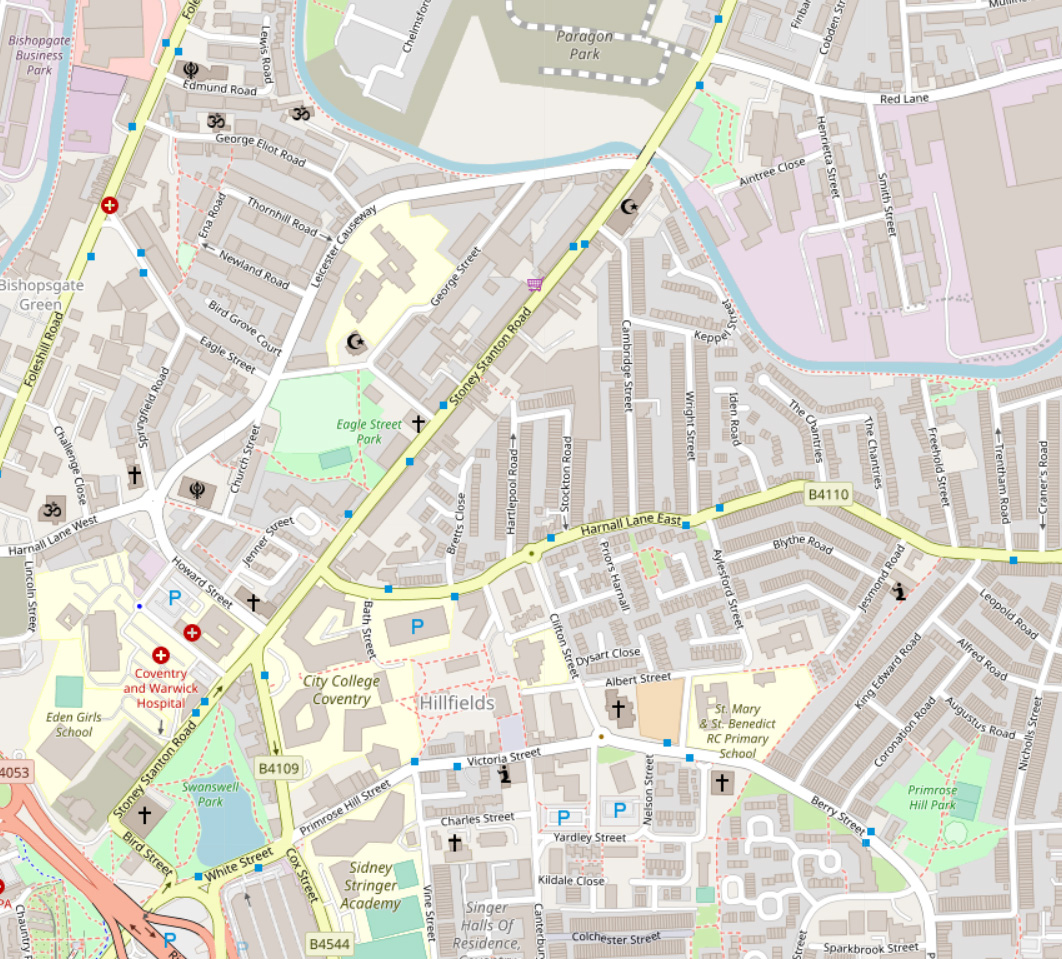
Today we have the penultimate episode of Peter Walter’s series of lockdown walks “being a compendium of idle facts, hidden places and meaningless historiana gathered on walks within easy striding distance of the writer’s abode – and beyond”.
This is the Swanswell after all, so it’s only right that there should be a dozen of the stately birds lording it over the coots and ducks and Canada geese in the morning sunshine.
Nevertheless, it still comes as a bit of a surprise that la-di-da swans should feel so much at home on an inner city stretch of water choked with beer cans and burger wrappers. But not even the presence of crocodiles seems to put them off.
These crocs are not in the water, as it happens, but high on the gables of the neighbouring Edwardian remnants of Coventry and Warwickshire Hospital. Carved in wood and painted black, they’re an unusual decorative flourish whose presence on a hospital building nobody can quite explain.

It’s very much a time of renewal at this end of the Stoney Stanton Road. The old hospital survivors, built as nurses’ home and outpatients clinic, are being rather fetchingly turned into homes for students, while across the road, St Mark’s Church, consecrated in 1869 and closed for worship almost fifty years ago, has re-opened for ecclesiastical business. A brace of health centres and City College, the stern grey cladding of their buildings splashed with colour, complete a scene that would have been hard to imagine barely a decade ago.
On the corner of Harnall Street West, the once handsome Rose and Woodbine pub still clings to some of its striking features, although it called time on its last drinkers more than ten years ago. The pub first welcomed drinkers in 1898, the same year that, just up the road, the fiercely anti-alcohol Wesleyans were throwing open the doors of their new church. Coincidence or not, both buildings have found new lives, the pub as flats, the church as a family centre run by the Islamic Brotherhood.

This part of Stoney Stanton Road still feels like the heart of Muslim Coventry, with its Halal food shops and travel businesses advertising journeys to the Hajj, its study centres and its mosques; Jamia off to the west in Eagle Street and the Masjid-Zeenat-ul-Islam tucked into the lea of Priestley’s Bridge. Built on a site that was once a tram depot, it’s the biggest in the city, with many university students among its worshippers.

Beyond the bridge lies the yellow-painted terrace of houses that make up the Coventry Peace House, and then the tiny studio where the celebrated photographer Masterji plied his trade. Round the corner in Red Lane, the ghost of the 60-acre Coventry Ordnance Works still haunts the streetscene, nearly a century after it closed down. Its vast gun workshop, the biggest structure of its kind in Europe when it was built in 1905, did service in the 1980s as a European Union grain store and still functions as a warehouse. Running parallel to the Stoney Stanton Road, its long grey roof looms over the Peace House, a reminder of the awkward dichotomy that characterises Coventry – a city of peace and a city of defence industries.
